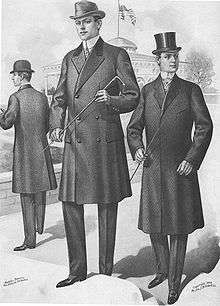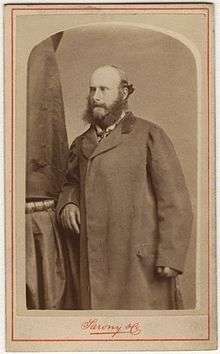Chesterfield coat

The Chesterfield is a long, tailored overcoat named after George Stanhope, 6th Earl of Chesterfield, a leader of British fashion in the 1830s and 1840s.[1] [2]
History
The Chesterfield coat arose around 1840,[2] along with the lounge suit, as an alternative to the highly shaped coats it replaced, such as the frock overcoat with its heavy waist suppression using a waist seam.
Design details
The Chesterfield has no horizontal seam or sidebodies, but can still be somewhat shaped using the side seams and darts. It can be single- or double-breasted, and has been popular in a wide variety of fabrics, typically heavier weight tweeds, or charcoal and navy, and even the camel hair classic. It has often been made with a velvet collar.[2] These variations make it extremely versatile, so it can be worn with a city suit or even semi-formal dress, as well as casual sports jackets. It was a staple of smartly dressed men's wardrobes from the 1920s to 1960s, and has become a classic style for both men and women.[2]

See also
References